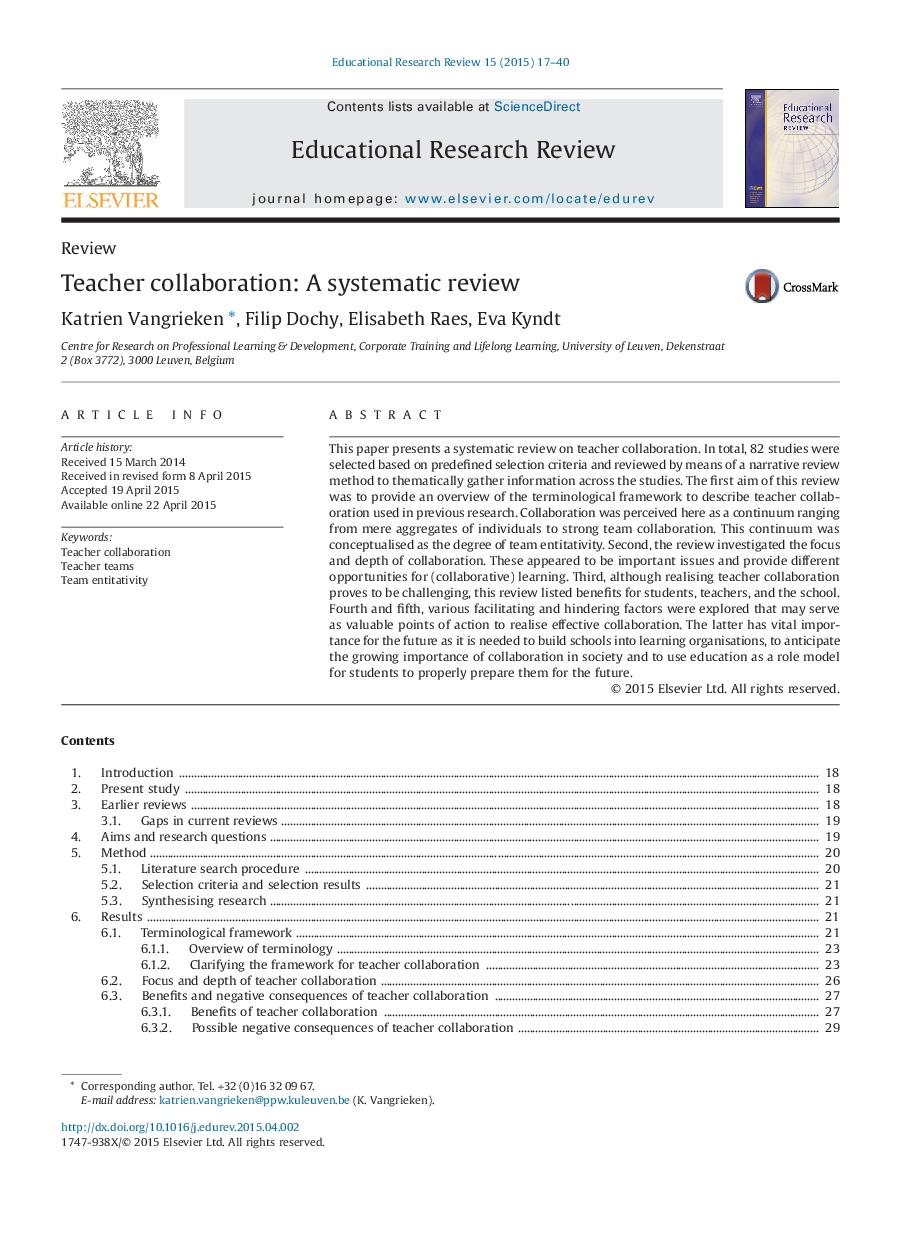| Article ID | Journal | Published Year | Pages | File Type |
|---|---|---|---|---|
| 355080 | Educational Research Review | 2015 | 24 Pages |
•Terminology and different forms of teacher collaboration are discussed.•Teacher collaboration is discussed as a continuum (team entitativity).•Benefits and possible negative consequences of collaboration are listed.•Facilitating and hindering factors of collaboration are discussed.
This paper presents a systematic review on teacher collaboration. In total, 82 studies were selected based on predefined selection criteria and reviewed by means of a narrative review method to thematically gather information across the studies. The first aim of this review was to provide an overview of the terminological framework to describe teacher collaboration used in previous research. Collaboration was perceived here as a continuum ranging from mere aggregates of individuals to strong team collaboration. This continuum was conceptualised as the degree of team entitativity. Second, the review investigated the focus and depth of collaboration. These appeared to be important issues and provide different opportunities for (collaborative) learning. Third, although realising teacher collaboration proves to be challenging, this review listed benefits for students, teachers, and the school. Fourth and fifth, various facilitating and hindering factors were explored that may serve as valuable points of action to realise effective collaboration. The latter has vital importance for the future as it is needed to build schools into learning organisations, to anticipate the growing importance of collaboration in society and to use education as a role model for students to properly prepare them for the future.
